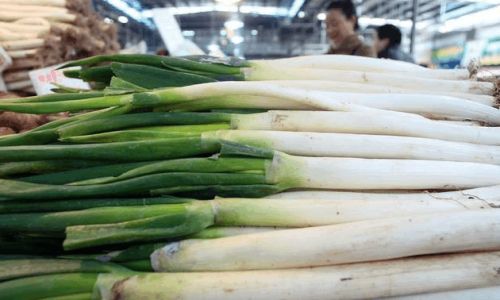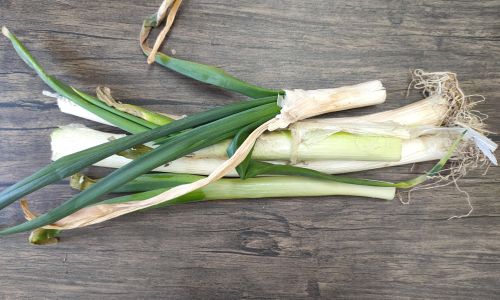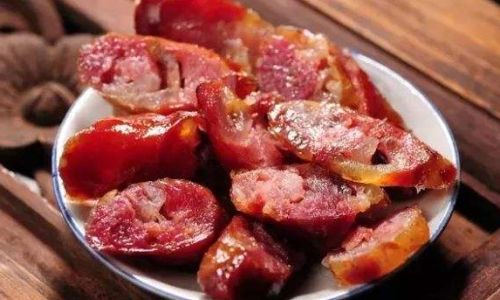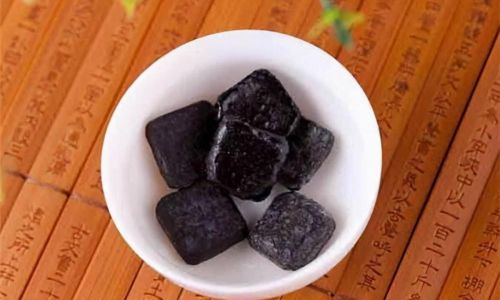Table of content
Green onions, also known as scallions or spring onions, are a staple in kitchens worldwide. Their mild, oniony flavor and crisp texture make them a versatile ingredient for salads, soups, stir-fries, and garnishes. However, their delicate structure and high water content often lead to rapid wilting, sliminess, or spoilage if not stored properly. This article explores science-backed methods to extend the shelf life of green onions, ensuring they remain crisp, vibrant, and flavorful for up to several weeks. By understanding the environmental factors that accelerate decay—such as moisture loss, ethylene gas exposure, and microbial growth—you can adopt storage solutions that counteract these issues effectively.
Refrigeration: The Foundation of Freshness
The refrigerator is your first line of defense against premature spoilage. Green onions thrive in cool temperatures (32–36°F or 0–2°C), which slow down enzymatic activity and bacterial growth. However, simply tossing them into the crisper drawer often leads to dehydration. Here’s how to optimize refrigeration:

1. The Damp Paper Towel Method
- Step 1: Trim the root ends slightly (no more than ½ inch) to remove damaged tissue.
- Step 2: Rinse the green onions under cold water to remove dirt, then pat them dry gently with a clean kitchen towel. Excess moisture can promote mold.
- Step 3: Wrap the bunch loosely in a damp paper towel. The towel should be moist but not dripping—aim for 70–80% humidity.
- Step 4: Place the wrapped bundle inside a perforated plastic bag or an open container. This allows airflow while trapping enough moisture to prevent wilting.
- Step 5: Store in the crisper drawer, away from ethylene-producing fruits like apples, bananas, or avocados, which accelerate decay.
Why It Works: The damp towel maintains humidity without creating a soggy environment, while the bag protects against cross-contamination from other foods. This method keeps green onions fresh for 7–10 days.
2. Standing in Water: Mimicking Their Growth Environment
- Step 1: Trim the roots to 1 inch and remove any wilted outer layers.
- Step 2: Place the green onions in a jar or glass, root-end down, and add enough cold water to submerge the roots (about 1–2 inches).
- Step 3: Cover the greens with a plastic bag, securing it with a rubber band around the jar’s neck to create a mini greenhouse.
- Step 4: Store on a refrigerator shelf (not the door) where temperatures are most stable. Change the water every 2–3 days.
Why It Works: The roots absorb moisture, keeping the stalks hydrated and crisp. This method can extend freshness up to 2 weeks, though the greens may start to yellow slightly after day 10.
Freezing: A Long-Term Solution
Freezing halts microbial growth and enzymatic reactions, preserving green onions for 3–6 months. While texture changes are inevitable (they’ll lose crispness), frozen scallions retain their flavor well, making them ideal for cooked dishes.
1. Chop and Freeze
- Step 1: Rinse, dry, and chop green onions into desired sizes (rings, slices, or ½-inch pieces).
- Step 2: Spread the pieces in a single layer on a baking sheet lined with parchment paper. Freeze for 1–2 hours until solid.
- Step 3: Transfer to airtight freezer bags or containers, removing as much air as possible. Label with the date.
Pro Tip: Use ice cube trays for portion control. Fill each compartment with chopped scallions and top with water or olive oil. Once frozen, pop the cubes into a bag.
2. Blanching (Optional)
Blanching (briefly boiling then shocking in ice water) preserves color and texture better than raw freezing. However, it’s unnecessary for green onions, as their delicate structure doesn’t benefit significantly from this step. Skip it to save time.
Root Preservation: Regrowing and Reusing
Green onions are one of the few vegetables that can regrow from their roots. This method not only extends freshness but also reduces waste.
1. Soil Regrowth
- Step 1: Trim the green tops, leaving 1–2 inches of the white bulb and roots intact.
- Step 2: Plant the roots in a small pot filled with potting soil, burying them ½ inch deep.
- Step 3: Water lightly and place the pot in a sunny windowsill. New growth will emerge within 5–7 days.
- Step 4: Harvest the greens by snipping what you need, leaving the roots intact for continuous regrowth.
Why It Works: The roots absorb nutrients from the soil, allowing the plant to photosynthesize and produce new shoots. With proper care, a single bunch can last 2–3 months.
2. Water Regrowth
- Step 1: Follow steps 1–3 of the “Standing in Water” method (page 1).
- Step 2: Change the water daily and place the jar in indirect sunlight.
- Step 3: Harvest the greens by cutting them 1 inch above the roots. New growth will appear within days.
Limitation: Water-grown scallions tend to weaken after 3–4 harvests, so transfer them to soil for longer-term regrowth.

Advanced Tips for Peak Freshness
1. Ethylene Gas Avoidance
Ethylene, a natural plant hormone, accelerates ripening and decay. Store green onions away from ethylene-producing fruits (apples, tomatoes, melons) and ethylene-sensitive produce (leafy greens, herbs).
2. Humidity Control
Most refrigerators have high-humidity crisper drawers. Use them for green onions, but avoid overcrowding, which traps moisture and promotes mold.
3. Cleanliness Matters
Before storage, remove any damaged or slimy stalks to prevent spoilage from spreading. Sanitize jars, knives, and cutting boards to avoid cross-contamination.
Signs of Spoilage to Watch For
- Sliminess: A bacterial film indicating decay.
- Yellowing or Wilting: Loss of moisture and nutrients.
- Foul Odor: A sign of fermentation or rot.
- Mushy Texture: Over-ripeness or freeze-thaw damage.
Discard green onions immediately if these signs appear.
Comparing Storage Methods
| Method | Shelf Life | Texture Preservation | Flavor Retention | Effort Level |
|---|---|---|---|---|
| Refrigeration | 7–14 days | High | Excellent | Low |
| Freezing | 3–6 months | Low (softens) | Good | Medium |
| Soil Regrowth | 2–3 months | High | Excellent | High |
| Water Regrowth | 2–3 weeks | Medium | Good | Low |
Conclusion
The best method depends on your needs:
- For immediate use (1–2 weeks): Refrigerate using the damp paper towel or standing water method.
- For long-term storage (months): Freeze chopped scallions.
- For sustainability and fresh harvests: Regrow in soil or water.
By combining these techniques with proper hygiene and temperature control, you can enjoy crisp, flavorful green onions while minimizing food waste. Experiment to find what works best for your kitchen—your salads, soups, and stir-fries will thank you!





0 comments